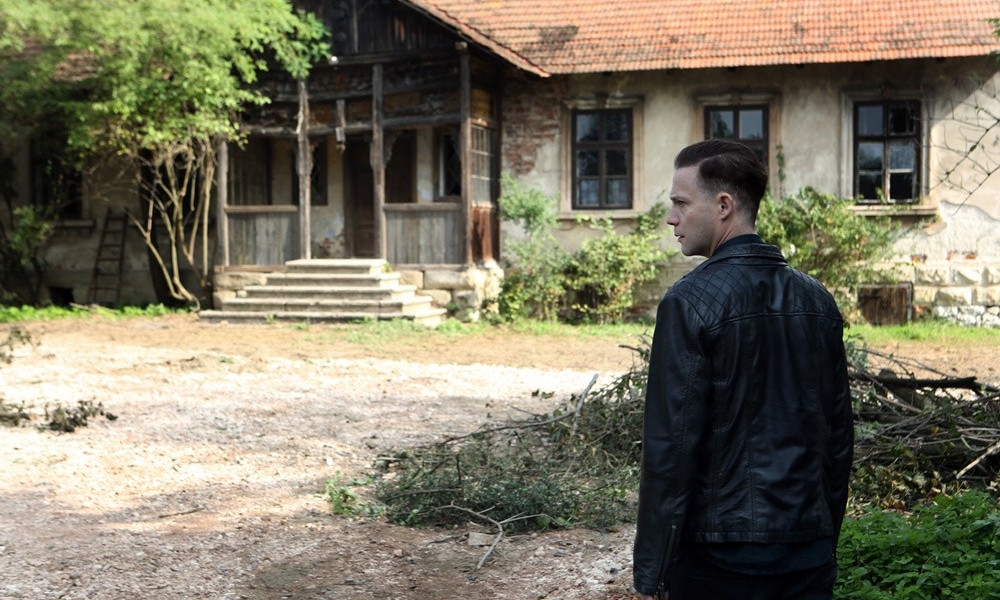Ghosts, Hauntings and the Moral Weight of Place
I spent my New Year’s Eve watching Marcin Wrona’s The Demon, a perfectly normal New Year’s Eve activity. It’s a 2015 film starring Itay Tiran and Agnieszka Zulewska as a happy soon-to-be-married Polish couple whose bliss is interrupted by a Dybbuk, the ghost of a Jewish woman killed during the Holocaust.
It’s a really great movie. A lot of the press surrounding it was about Wrona, who commit suicide just before the film was released. The film itself is often billed as a horror movie, but it’s more unsettling than frightening. It focuses on a family’s house, which was possessed by a Catholic Polish family during World War II. As Piotr, the Britain-raised Pole marrying into the family, discovers – the Jewish woman who was raised there in the ‘30s and ‘40s still possesses a supernatural claim on the place.
Screencap from The Demon.
The Demon made me think about Ghostland, Colin Dickey’s phenomenal 2016 book about what haunted America says about how the US tells stories about itself. In an NPR interview promoting the book, he points out how the ghosts in the stories change identities, affecting the narrative, based on the moral point the storyteller wants to underscore:
“So there’s a story of a woman who appears being dragged down the middle of the main street in Leeds, N.Y., by a horse. She’s sort of tied to a horse being dragged down. And this story has evolved over the years to sort of suit different purposes. It was retold by an abolitionist in the mid-19th century where the woman in question was a slave and the story was slanted so that — you know, obviously it was to show the horrors of slavery — that her master had punished her in this awful way. And then it later showed up about 40 years later by somebody who was far more interested in class warfare, and she had gone from being a slave to being a European immigrant who was sort of working poor and who was being beaten by her master. And so the story seems to sort of evolve through the years depending on what kind of morality tale the teller wants to tell.”
In a The New Republic article, Dickey links these ghost narratives to one of land ownership, describing how unsettled American land claims truly are — and how ghost stories underscore this unsettlement:
“The narrative of the haunted Indian burial ground hides a certain anxiety about the land on which Americans—specifically white, middle-class Americans—live. Embedded deep in the idea of home ownership—the Holy Grail of American middle-class life—is the idea that we don’t, in fact, own the land we’ve just bought. Time and time again in these stories, perfectly average, innocent American families are confronted by ghosts who have persevered for centuries, who remain vengeful for the damage done. Facing these ghosts and expelling them, in many of these horror stories, becomes a means of re-fighting the Indian Wars of past centuries.”
In The Demon, this confrontation isn’t over the course of centuries but rather three generations. Indeed, there’s an “Old Jew” character who is the only one who can recall the old days (whereas others elide it).
But there’s an interesting linkage here, with Wroca’s farm, haunted by a 1940s-era ghost and Dickey’s reference to suburban land possession. After all, World War II was flanked by American moments of wealth-through-plunder: redlining, highway construction, and the depletion/renewal of urban downtowns. This is within recent memory.
I would love to see a movie about a gentrifying white couple in the US encountering the ghosts of the people who lived there before. Or a plantation wedding that goes horribly awry. Something that was less about an evil that must be defeated than a history that must be encountered. Something similar to Wroca’s film.
Screencap from The Demon.
Hauntings are perhaps the best way, or at least the most comfortable way, to tell stories of removal and dispossession to middle-class audiences. Ghosts are a way to talk about what has happened here, what memories are here, and on whose bones or dreams we currently trample.
I do not have to look out at Poland to see how history settles its scores with the present, since similar stories might be under the shuttered pub on my block or the concrete squares of my campus. These stories can weigh us down or anchor us as we walk around and make sense of the surroundings. Ghosts connect people to place, whether they want it or not.

